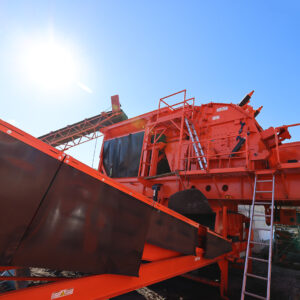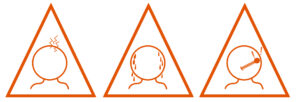A Hot Topic: Crushing in the Heat
As the summer months roll in, it is essential to prioritize heat safety in the workplace. Excessive heat can pose significant risks to employee health and well-being, potentially leading to heat exhaustion, heat stroke, and other heat-related illnesses. To address these concerns, the Occupational Safety and Health Administration (OSHA) has implemented regulations and guidelines to help employers create a safe and healthy work environment during hot weather. Together, we will explore OSHA’s regulations and best practices for heat safety, ensuring compliance and safeguarding the well-being of employees.

OSHA’s Guidelines for Heat Safety:
To assist employers in creating safe working conditions, OSHA provides comprehensive guidelines for managing heat stress in the workplace. These guidelines include the following key considerations:
Water, Rest, and Shade: Employers should provide an adequate supply of potable water and encourage employees to drink water frequently (it is recommended to drink a cup cold water every 20 minutes). Rest breaks should be scheduled in shaded or air-conditioned areas to allow workers to recover from heat exposure.
Acclimatization: Due to the statistic of “nearly 3 out of 4 fatalities from heat illness happen during the first week of work”, it is recommended that workers gradually adjust to hot environments by gradually increasing exposure time over a span of days or weeks. This process helps the body build a tolerance to heat and reduces the risk of heat-related illnesses.
Training: Employers should provide training to employees and supervisors about the hazards of heat stress, its symptoms, and appropriate preventive measures. Training should also cover emergency response procedures for heat-related illnesses and appropriate attire (such as hats and light-colored breathable clothing).

Recognize the Signs
When it comes to safety, it is always encouraged to monitor yourselves and others for signs of life-threatening symptoms. To do that, you need to understand the signs of heat related illnesses.
If you or a co-worker are experiencing any of the following symptoms:
- Headache or nausea
- Weakness or dizziness
- Heavy sweating or hot, dry skin
- Elevated body temperature
- Thirst
- Decreased urine output
Then the following actions should be taken:
- Give water to drink
- Remove unnecessary clothing
- Move to a cooler area
- Cool with water, ice, and/or a fan
- Do not leave alone
- Seek medical care if needed

At what point should you immediately call 911?
If anyone is experiencing the following, call 911 immediately, cool the worker right away, and do not leave their side until help arrives:
- Abnormal thinking or behavior
- Slurred speech
- Seizures
- Loss of consciousness
Implementing Heat Safety Best Practices:
To ensure compliance with OSHA regulations and protect employees from heat-related risks, employers can adopt the following practices:
Assessing and Monitoring: Conduct a thorough evaluation of the workplace to identify potential heat hazards. Implement a system to monitor temperature and humidity while regularly determining when heat stress preventive measures should be implemented during the day.
Communication and Employee Engagement: Establish open lines of communication with employees to encourage reporting of heat-related concerns. Involve employees in the development and review of heat safety policies to enhance engagement and adherence.
Regular Breaks: Schedule frequent rest breaks in cool or shaded areas, ensuring employees have sufficient time to rehydrate and recover from heat exposure.
First Aid and Emergency Response: Establish a comprehensive heat illness prevention program that includes protocols for recognizing and responding to heat-related emergencies promptly. Ensure that first aid supplies and emergency response equipment are readily available on-site.

Keeping You Safe to Keep You Crushing It
Heat safety is a critical aspect of maintaining a healthy work environment during the hot summer months. By adhering to OSHA’s guidelines and implementing best practices, employers can protect their employees from heat-related illnesses and create a safer workplace. Remember, prioritizing the well-being of workers not only promotes compliance but also fosters a positive and productive work culture. Eagle Crusher is committed to ensuring heat safety and safeguarding the health of our industry. If you have any questions, please refer to OSHA’s guidelines for Heat Safety. Eagle Crusher’s Team is always available to help you throughout your crushing journey.
This article does not serve as an official safety recommendation by Eagle Crusher and should not be viewed as such. All relevant staff should consult their owner’s manual before operating Eagle Crusher equipment, or any other manufacturer’s equipment, and comply with the safety guidelines therein.



